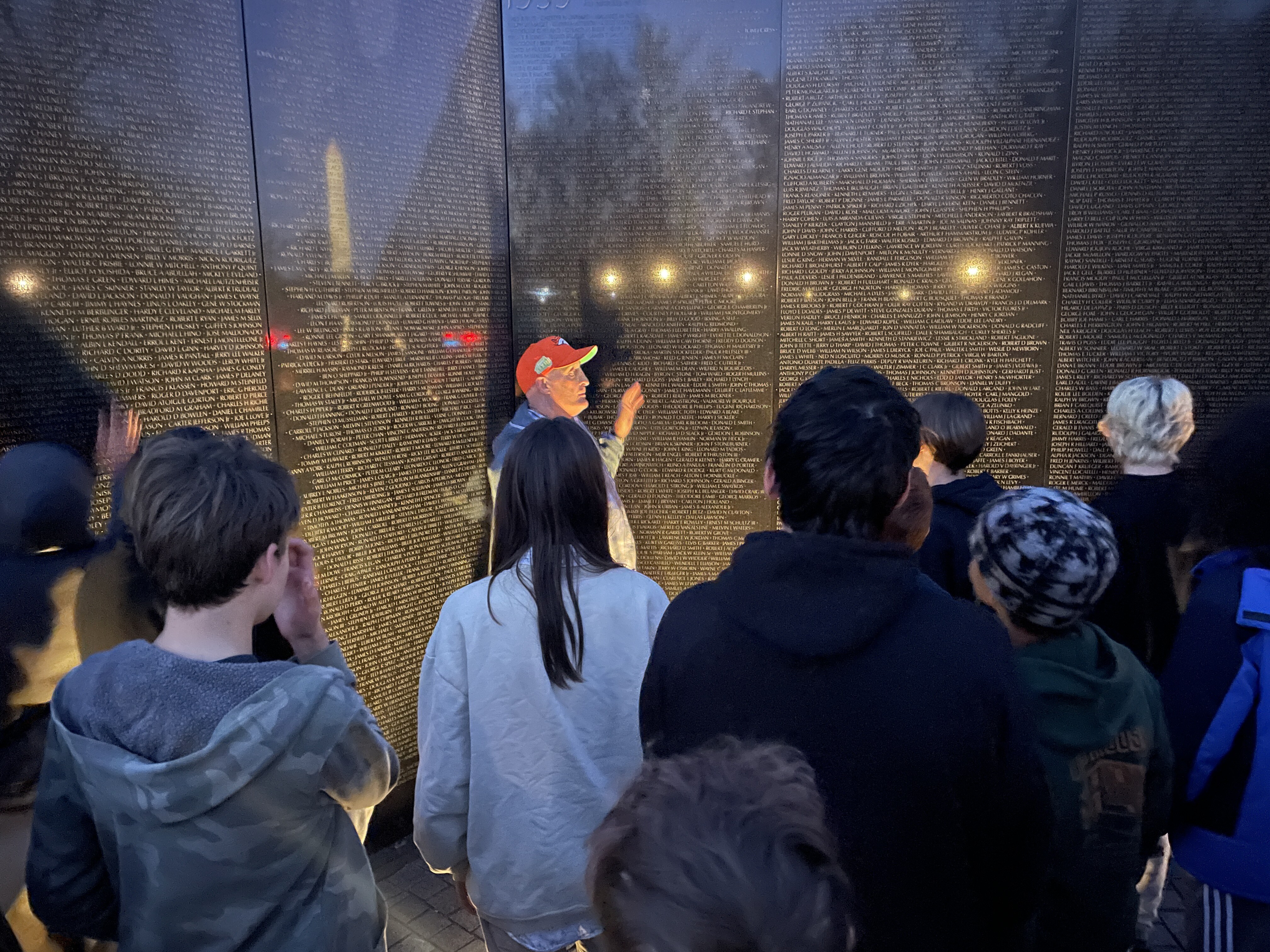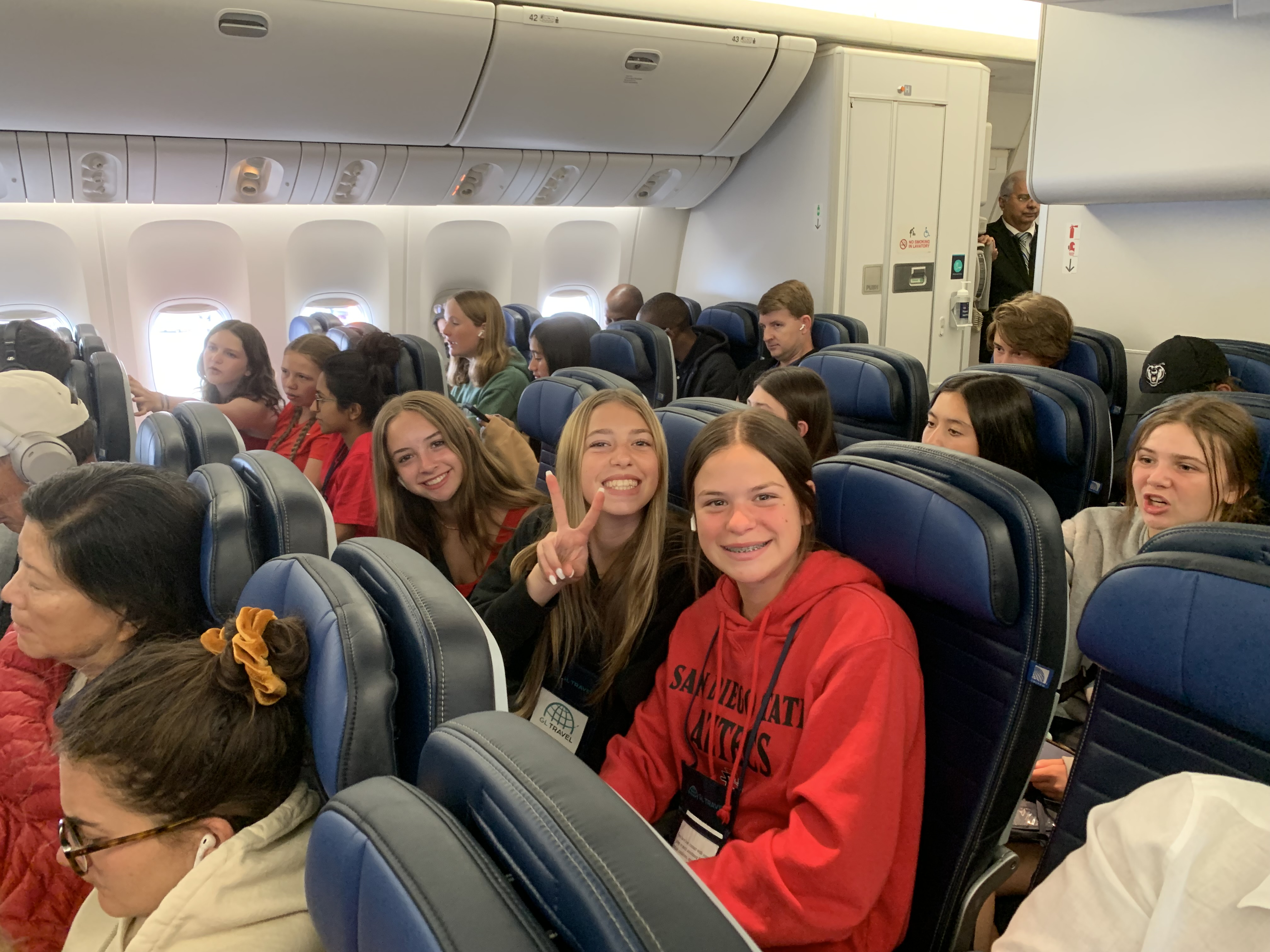Tips for Creating Your Road Trip Lesson Plan

Traveling is a wonderful way to help our students learn about the world and gain new experiences. However, often the hours spent in transit to your ultimate destination are considered to be wasted time. But that doesn’t have to be the case! Incorporating educational activities into travel plans can not only make travel more enriching and enjoyable but also promote learning and personal growth. One of the advantages of using travel time for project-based learning and lesson plans is that it requires the students to be adaptable, flexible, and resilient. Creating a lesson plan that utilizes time spent on the bus can help prepare your students for the learning activities planned for the rest of the trip and has the added bonus of keeping them busy on the bus. Idle hands… So, let’s look at a few different tips for planning, creating, and implementing your road trip lesson plan.
Consider Your Learning Objectives
Whatever road trip project you plan for the bus ride should match your learning objectives for the entire trip. You can use these learning resources to prepare students for the lessons they’ll have during the trip. Sometimes, students will benefit from having some background information on the destination itself. This is a perfect time for them to acquire that information.
But what knowledge will they need to get the full benefit of their experiences? You’ll need to put some thought into what they’ll need to problem-solve and research. Why is your destination worthy of a visit in the first place? How does the geography of the location play a part in why your destination is where it is? Are there any special landmarks to look out for? Any fun facts that they should know? Any outside history that will help bring the purpose of your trip into focus?
Whatever you come up with, you can create activities for the bus to help them have fun and be ready to get the most out of their school trip experiences.
Be Mindful of Time
Proper planning of road trip lesson plans needs to take one major thing into consideration: time. You want to be sure that you’re mindful of how much time students have on the bus. You don’t want to give them an activity that takes four hours if you only have 2 hours of driving time. That will leave you with a bus full of confused students worried that they’ll have homework to do at the hotel. For longer trips, you may want to have more than one activity planned in case students finish early and are looking for other things to do.
Most road trips are broken up into segments that are around 2 hours each. That’s around the time you’ll have between bathroom breaks and the like. It can help to break activities up into similarly sized blocks. You’ll want to strike a happy medium so students can complete the task on the bus but don’t feel pressed for time.
It’s also important to give students some time to relax on the bus. As tempting as it is to keep them busy all the time, it’s important for them to have some time to relax and refresh. And let’s not forget their all-important phone time! Students these days are tied to their electronics, and it’s better for them to get that time on the bus than at the sites. If they haven’t had the chance to do so on the bus, they’ll be updating social media at your destinations instead of paying attention.
Activity Ideas
Now, on to the activities themselves! There are lots of different activities you can assign on a road trip. Here are a few suggestions that can be easily tailored to any trip:
Inquiry Experiments
Let’s take an example: California is an incredibly biodiverse state, which makes it a great place for scientific inquiry experiments. Have each student come up with a question about wildlife, habitats, or ecosystems. Then have them create a hypothesis about how it might change as you move through the state. At rest stops, have them explore while they’re stretching their legs and collect items as evidence to support or disprove their hypothesis (watch out for poison oak). As you drive, they can take observations and make notes about how things are changing. Perhaps every 30 minutes they need to look around and compare the current surroundings to the one before. What’s different? Are the trees thicker or sparser? Is there more water or less? What kind of crops are being grown?
At the end of the road trip, they should have enough evidence to answer their question and make an analysis of their chosen topic. This can be a particularly interesting activity when crossing multiple states.
Budgeting
It might sound boring, but a budgeting exercise or worksheet is a great chance for teaching life skills and helping students manage their money on a multi-day trip. You can plan a road trip handout template for each student with basic information such as where you’re staying and the names of places you’ll be visiting on the trip. Let them create a budget that covers everything from gas to lodging to food. Make sure they include a section for fun things like snacks and buying souvenirs. How do their budgets match each other? Did anybody think to include something that no one else did? How did they arrive at their numbers for food or lodging? You can go as in-depth as you like on this exercise.
Ultimately, this not only helps build their math skills for the real-world and financial savvy, but it helps them see what it might take if they want to go back on their own one day. Who knows? It might even prevent them from going through all of their spending money on the first day!
Road Trip Games
We’ve all heard the stories, both good and bad, about bus games played on the motorcoach. But this exercise isn’t about just any games, it’s all about student-made road trip games!
When you get on the bus, tell your students that you’d like them (alone or in small groups) to create a fun new road trip game. You’ll need to set some boundaries, such as only being able to use materials on the bus or that they brought with them. Also, it’s important that the game does not require anyone to be moving around the bus. Safety first!
After each student or group of students has created a game, you can have them pitch it to the bus. The students can then vote on which one they’d like to play for the next segment of your trip. Please don’t hesitate to share any great ideas with us! We’re always on the lookout for more games.
Trip Playlist
Another fun way to engage your students is to have each of them create a playlist for the road trip. Each selection should have some connection to either your destination or the places you’re passing through along the way. It could be based on an artist’s hometown, the song mentions the location in the lyrics, or some part of the song makes the student think of that place or the events that happened there.
After the students have finished their playlists (3 – 5 songs each), they can have the option to share their playlists with the rest of the bus. This will generate discussions about each other’s taste in music, and what it was about that song that led them to pick it. Create a printable playlist and share the music with the entire class.
Creative Writing
Another fun activity to engage critical thinking is creative writing. Frame the assignment with guiding questions from English language arts and social studies Have each student write something inspired by their time on the bus. Anything will work – a poem, a short story, a journal entry. It can be fictional or nonfictional but should represent some key aspects of your trip, which you can outline before they begin the assignment. This is a simple way to get students thinking about what they’re going to learn and how this trip might affect them as they travel to your destination. Have them submit their writing to you, and then you can choose a few to read to the bus as a whole. Let them try to figure out who wrote each piece!
This is also an activity you can repeat on the return trip. How have their perspectives or feelings changed during the trip? What was the highlight?
Return Activities
Many of these activities can be done on either leg of the trip, but there’s one great activity that you can save for the return journey. What If…? Have the students research some aspect of their destination or the events that occurred there. Knowing what they know now, how would they have done things differently? Would they have chosen another location for the city/landmark/etc.? What different actions would they have taken, and what would the ramifications of that be? Would it alter history for the better or worse? You can tailor this road trip lesson to highlight any aspect of the trip that you want the students to really remember.
Travel Time is a Learning Opportunity
When thinking about the traveling portion of your school trip, don’t let valuable time slip through your fingers. Whether your learners are at the elementary grade level, middle school, or high school students, the time spent on the road is an opportunity to prepare your students for what they’ll see and learn on the trip. In the end, it will help flesh out their understanding of the purpose of the trip and make the bus ride better (and maybe quieter) for everyone.
At GL Travel, we love helping teachers plan and prepare for their best student trip. Contact us today to see how we can help you get started!




